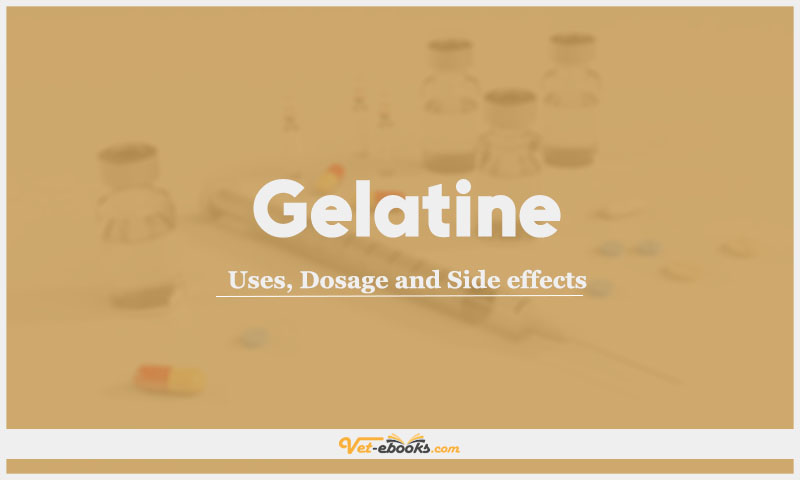Gelatine: Uses, Dosage and Side Effects

Overview
- Promotes retention of fluid within the vascular system through the exertion of oncotic pressure.
Uses of Gelatine
- The expansion and maintenance of blood volume in various forms of shock, including hypovolaemic and haemorrhagic shock.
Dose of Gelatine in Dogs and Cats
Dogs, Cats:
- Plasma volume expander: 10–20 ml/kg i.v. bolus.
- In normal circumstances do not exceed replacement of >25% of circulating blood volume with gelatines in a 24-hour period.
Drug Dosage Calculator
You Should Give:
Side Effects of Gelatine in Dogs and Cats
- Anaphylactoid reactions to gelatine solutions are rare; it is uncertain whether these reactions represent a specific immune response.
- In human medicine there are concerns over the safety of these solutions when used in patients with kidney disease.
Contraindications of Gelatine in Dogs and Cats
- No information available
Some Notes:
- The main difference between gelatine-based solutions and other synthetic colloids is that they have lower molecular weights (and hence are excreted rapidly), appear to have few antigenic or anticoagulative effects.
- The plasma half-life of most gelatines is approximately 8 hours (oxypolygelatine 2–4 hours), so that the duration of plasma expansion is much shorter than with hydroxyethyl starch.
- There appears to be little effect on coagulation or blood loss following gelatine administration.
- Use with caution in animals with congestive heart failure or renal insufficiency as will increase risk of circulatory overload.
Tip
Do You Want To Increase Your Veterinary Knowledge and Practical Skills?
You Can Now Browse and Download +3000 Books For Veterinary Professionals & Students Online.
Download Veterinary Books




















